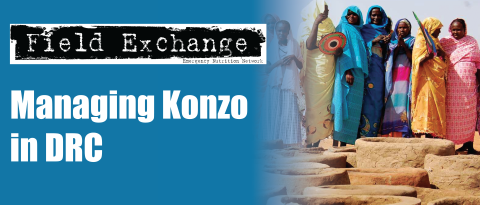Food security indicators after humanitarian interventions in Zimbabwe
Summary of research1
Rural households in Zimbabwe experience various levels of food insecurity and vulnerability. Worsening macroeconomic conditions, a fragile political environment, poor rainfall, low incomes, deteriorating environmental conditions, and the impact of HIV and AIDS characterise their circumstances. Non-governmental organisations (NGOs) have responded to the situation with a number of food interventions to alleviate food insecurity and poverty. A recent study set out to provide an analysis of food security indicators used to assess households benefiting from food interventions in 2006 in Zimbabwe.
In the study, a total of 60 households were chosen for each of three districts (Uzumba-Maramba-Pfungwe (UMP), Chivi and Tsholotsho), targeting beneficiaries of the Agricultural Protracted Relief Programme. Data were collected in July 2006. UMP district has a mixture of agro-ecological regions representing a range of natural resource bases that underpin different livelihoods in the area. Chivi is located in the south-eastern part of the country and receives poor and erratic rains. Livelihood activities are generally organised around crop production with some income generating activities, including gold panning, cross-border training and vegetable gardening. Tsholotsho is also in the dry southern part of the country with low and erratic rainfall. Floods recurrently occur and households are mainly dependent on remittances, livestock and drought-resistant crop production.
Household food security indicators, calculated on the basis of data collected by questionnaire, included the Household Dietary Diversity Score (HDDS), months of food shortages, and the Household Food Insecurity Access Scale (HFIAS). Districts were compared by analysis of variance and Tukey post hoc analysis.
Key findings were that the mean HDDS differed between the districts. Households in Chivi consumed foods from a greater variety of groups than households in Tsholotsho and UMP (4.7 vs 2.7 and 3.0 respectively, p <0.001). Food shortages during the previous year were experienced by 76.4% of the households, with UMP having the lowest occurrence of food shortages (56.7%) and Tsholotsho the highest (95%). Households in Tsholotsho experienced hunger throughout the year. For households in UMP and Chivi, October to January were the critical months when households experienced the most hunger. Spearman correlation analysis showed an inverse correlation between HFIAS and HDDS (r = -0.425, p <0.01). Households that experienced food shortages the previous year had a lower mean HDDS (3.2 vs 3.9, p < 0.001) and a higher mean HFIAS (17.1 vs 12.0, p < 0.001) than households that did not experience food shortages.
The authors concluded that there is value in using a variety and combinations of indicators in the design of food security interventions. The HDDS showed that beyond availability, food security also involves access to a variety of nutritious foods. The indicator pertaining to months of food shortages allows a deeper understanding of the nature of food insecurity. Hunger in Tsholotsho is experienced throughout the year, implying that the causes are chronic rather than seasonal, whereas Chivi and UMP experience seasonal hunger. The HFIAS use fully revealed the condition of food security in each site in terms of availability, stability, and intake of food.
The results show that any response to food insecurity needs to focus on increased consumption of specific food items to increase dietary diversity, particularly in Tsholotsho and UMP. Backyard gardens in Chivi and UMP provide a means for growing a variety of such crops. However, market interventions such as cash or food for work, that address erratic local food prices and chronic rather than seasonal food shortages, would be ideal for addressing food access in Tsholotsho. Seasonality in food shortages in Chivi and UMP should be taken into account in the design, targeting and timing of interventions. In Tsholotsho, the respondents' perceptions were that the situation had become worse regardless of the interventions, whereas in Chivi and UMP, the respondents did not perceive any noticeable differences.
In summary, the authors conclude that indicators are most beneficial when used in conjunction with one another, rather than as a summary index or scale.
1Gandure. S, Drimie. S and Faber. M (2010). Food security indicators after humanitarian interventions including food aid in Zimbabwe. Food and Nutrition Bulletin, vol 31, no 4, pp 513-522. 2010
Imported from FEX website


